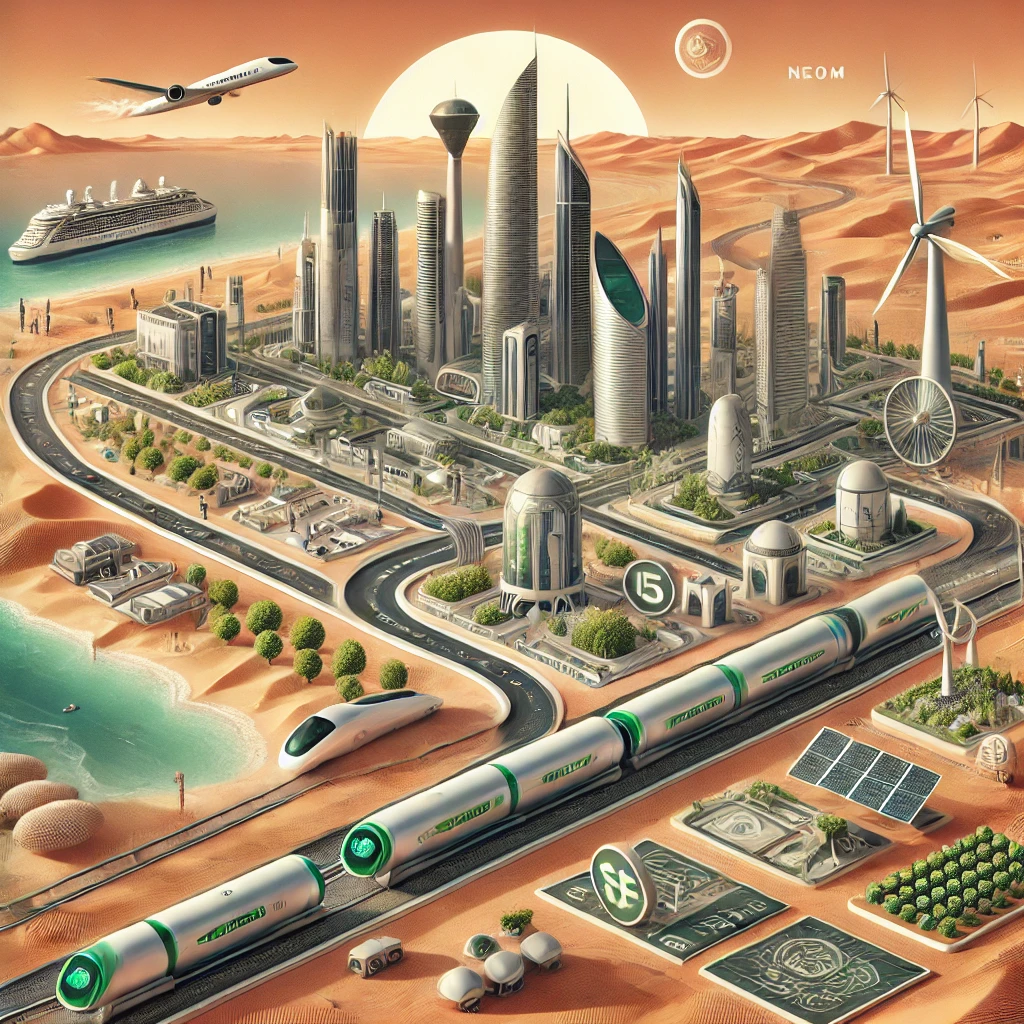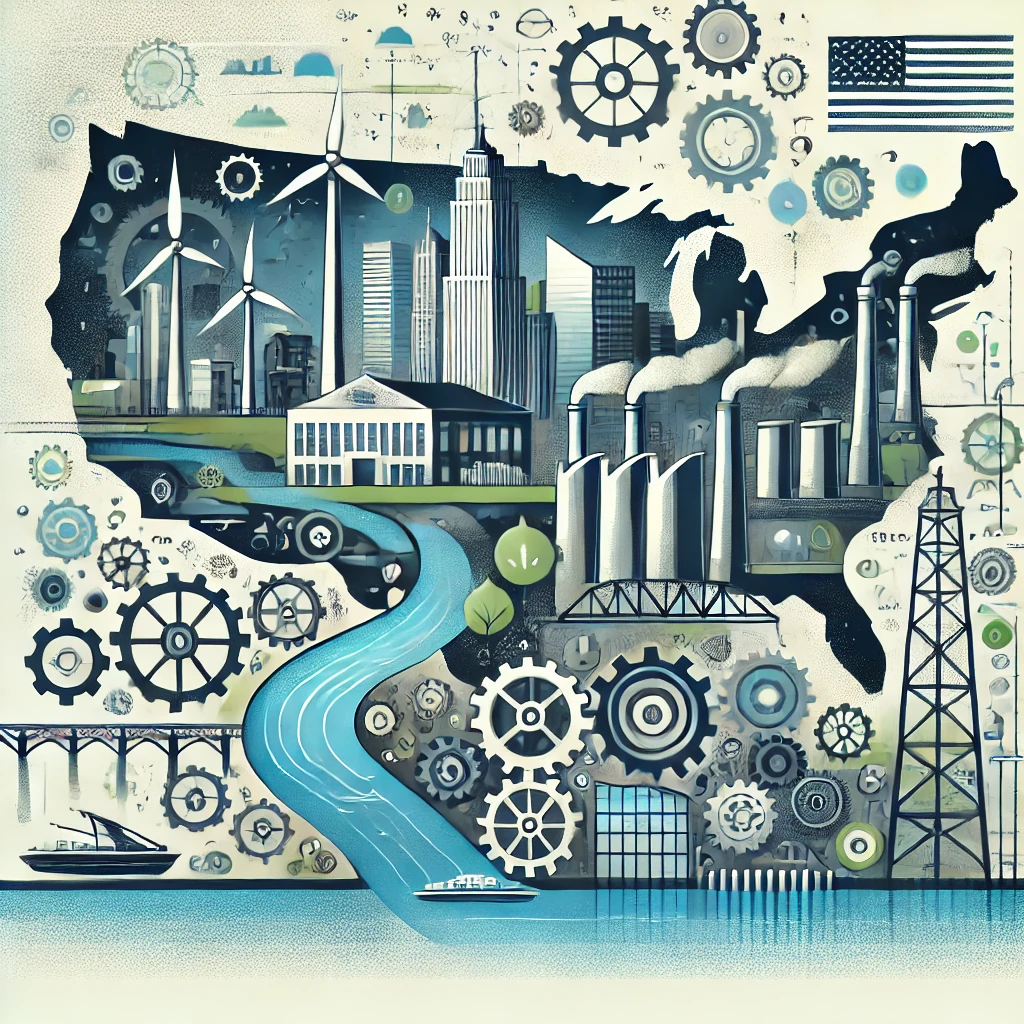Neom is an ambitious urban development project located in the northwestern region of Saudi Arabia, along the Red Sea coast. Announced in 2017 as part of Saudi Arabia’s Vision 2030 plan, Neom aims to transform the Kingdom’s economy by reducing its dependence on oil and fostering a diversified, knowledge-based economy. The project is backed by a budget of $500 billion and is envisioned as a hub for innovation, sustainability, and cutting-edge technology.
Covering an area of over 26,500 square kilometers, Neom is designed to host a population of around one million residents by 2030. The city is intended to integrate advanced technologies such as artificial intelligence (AI), Internet of Things (IoT), and renewable energy systems to create a highly efficient and sustainable urban environment. Neom will consist of various sub-projects, including The Line, Oxagon, and Trojena, each with a distinct focus on livability, industry, and tourism.
The Line, one of Neom’s most groundbreaking components, is a linear city structure that will extend for 170 kilometers, designed to eliminate the need for cars and ensure that all urban services are accessible within a short walking distance. This project aims to set new standards for urban living by emphasizing sustainability, zero emissions, and seamless integration with the natural environment.
Despite its ambitious goals, Neom has faced skepticism and criticism from various quarters, including concerns about the displacement of local communities and the feasibility of such an extensive and technologically driven project. Nonetheless, Neom continues to be promoted as a blueprint for the future of cities, where technology and sustainability are at the forefront of urban planning.
Statistics associated with Neom highlight its scale and ambition:
- Size: 26,500 square kilometers (equivalent to the size of Albania)
- Budget: $500 billion
- Population Target: 1 million residents by 2030
- Energy: 100% renewable energy sources
- Key Components: The Line, Oxagon (a floating industrial complex), and Trojena (a mountain tourism destination)
Neom and the 15-Minute City Vision
1. Localized Accessibility
The Neom Line is designed to support localized accessibility, allowing residents to reach essential services, recreational areas, and cultural hubs within 15 minutes. This infrastructure aims to enhance daily convenience and improve the quality of urban life.
2. Efficient Urban Mobility
Neom is incorporating advanced transportation technologies, including potential hyperloop systems and smart mobility solutions, to align with the 15-Minute City concept. These efforts are intended to ensure that residents can move efficiently and sustainably within the urban environment.
3. Technological Integration
Both Neom and the 15-Minute City model emphasize the integration of technology in urban living. The Neom Line, serving as a digital and transportation backbone, is expected to enhance connectivity and efficiency, contributing to a more streamlined and responsive urban environment.
Sustainable Living in Neom’s 15-Minute Neighborhoods
1. Renewable Energy Hubs
Neom’s commitment to renewable energy is in line with the sustainability goals of the 15-Minute City model. The Neom Line is expected to incorporate renewable energy infrastructure, supporting eco-friendly practices and contributing to the overall sustainability of the community.
2. Green Corridors
Neom’s focus on green spaces and biodiversity preservation is consistent with the 15-Minute City’s emphasis on creating green corridors. The Neom Line will likely traverse these areas, helping to integrate natural spaces into the urban landscape and making them accessible to residents.
3. Community Resilience
Both Neom and the 15-Minute City model prioritize building resilient communities. By enhancing connectivity and fostering local identity, the Neom Line aims to contribute to the development of neighborhoods that are adaptable and socially cohesive.
The Future Unveiled
As Neom progresses, the Neom Line represents a significant step towards achieving the city’s goals of sustainable urban living. The alignment between Neom’s urban planning and the 15-Minute City concept provides a framework for developing cities that are interconnected, sustainable, and focused on the well-being of their residents.
The Neom Line is more than just a transportation route; it is part of a broader effort to create a city where residents have easy access to the essentials for a fulfilling and sustainable life. Neom’s approach reflects a commitment to innovation and sustainability in urban planning, with the potential to serve as a model for future cities.
Neom, a $500 billion megacity project in Saudi Arabia, is part of the Kingdom’s Vision 2030 plan to diversify its economy and reduce its dependence on oil. The project aims to create a model for urban living that incorporates advanced technologies like AI, IoT, and renewable energy. The city is planned to house 1 million residents by 2030, with the Neom Line serving as a central feature of this development. (Source: Neom Official Website)
The World Economic Forum’s 15-Minute City concept, which focuses on reducing commute times and promoting local economies, is a key influence on Neom’s urban planning strategies. The principles of this model are reflected in Neom’s efforts to create sustainable and accessible urban spaces. (Source: World Economic Forum)
Discover more from Kango Anywhere
Subscribe to get the latest posts sent to your email.




